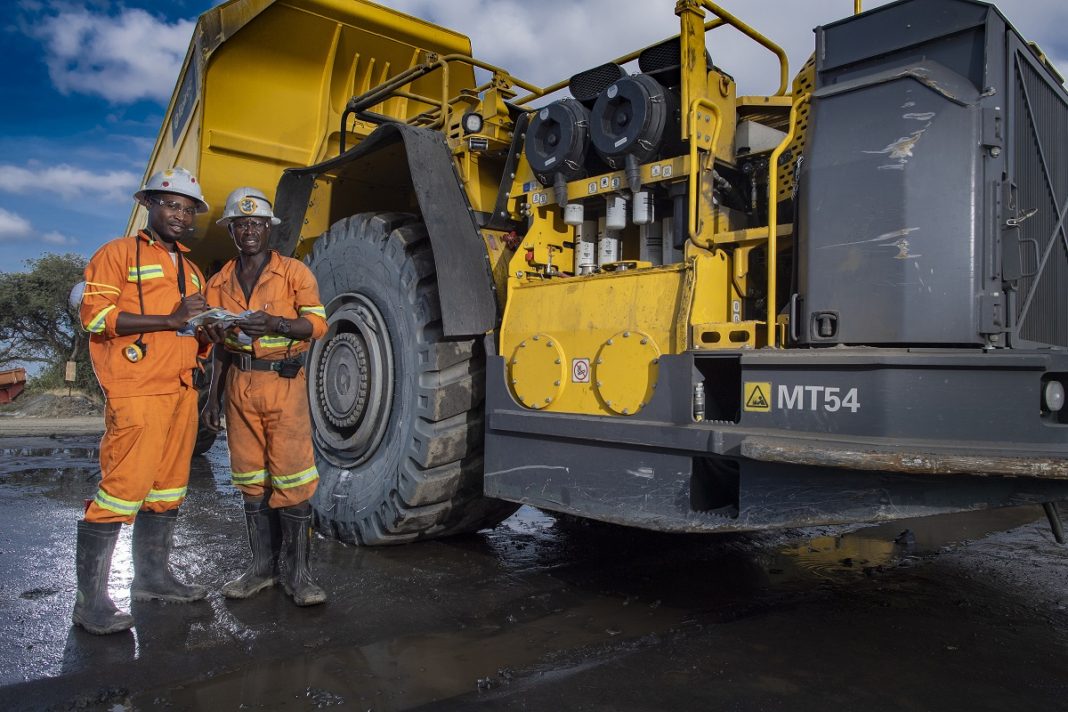Munali Nickel Mine’s exciting relaunch of operations in April 2019 is the result of no less than $50 million of investment by Consolidated Nickel Mines, and a culmination of almost four years of hard work and determination by the whole Mabiza Resources team. But modernisation and an emphasis on cutting-edge mining practices is central to Munali’s reemergence on the scene — as well as its highly anticipated success.
We took a closer look at what Munali has been busily creating.
The first of its kind in Zambia
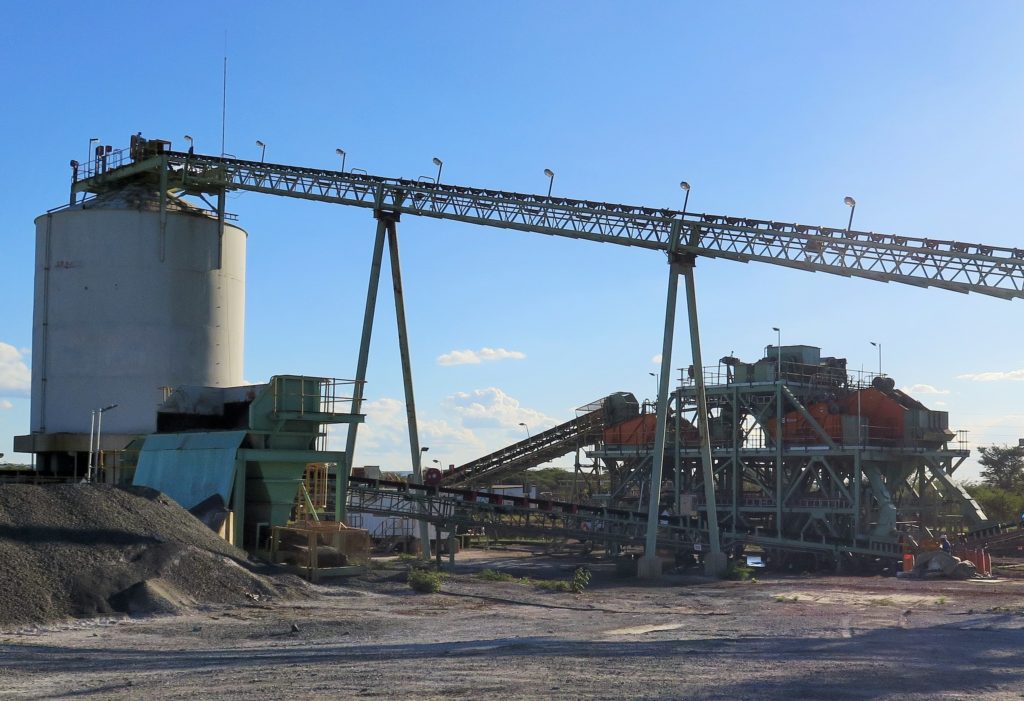
Munali’s refurbishment was preceded by a complete reassessment of the plant, with each and every aspect reviewed and re-engineered in order to derisk it technically and economically. The process involved re-interpreting the orebody, changing the mining method and — crucially — revising the metallurgical process. That’s where Dense Media Separation (DMS) technology comes in.
The Fine Ore Bin (left) is where the ore is stored before being sent to the DMS (right). Once material has been separated according to its density by the DMS, it is milled and then sent to undergo standard floatation. (Floatation is the process whereby valuable minerals are separated from rock.)
The Munali Nickel Mine is comprised of an underground mining operation where nickel sulphide ore is extracted, DMS technology, and a standard flotation circuit. The result is the production of a 10-12% nickel concentrate.
National leaders show their support
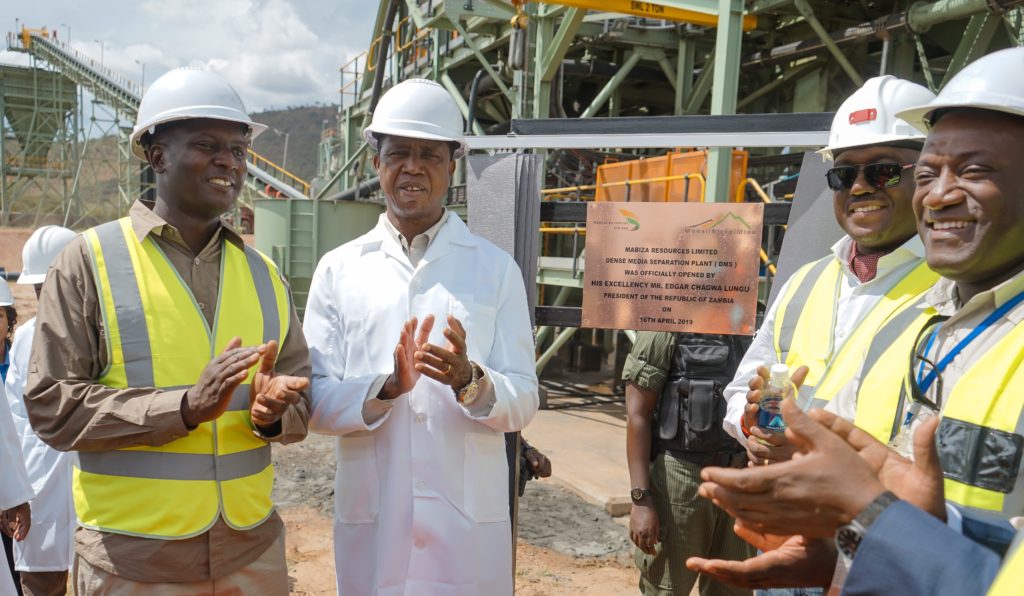
Naturally, excitement about Munali’s relaunch — and the mine’s target production of 5,000 tonnes per annum (tpa) of saleable nickel concentrate — has spread beyond its Mazabuka-based plant. President Lungu himself officially commissioned Munali’s DMS on 16 April 2019, the same day that the plant’s operations started up again after almost eight years of near-dormancy while on care and maintenance.
Behind the scenes

This is the Dense Medium Controller, where all the magic happens. Munali’s cutting-edge DMS technology is all digitally controlled via this device. “This introduction of the DMS on the processing side was a game-changer,” says Mabiza Resources’ General Manager, Matthew Banda, who has been working at the mine since it was nothing but maize fields. The DMS improves low grade ores via the mechanical separation of waste rock. Ores are then fed into the milling machines for further processing. It all boils down to taking advantage of the difference in density between waste rock and ore, and separating it accordingly — hence “Dense Media Separation”.
“This technology is largely used in gold processing or in mineral types that have significant density differences in comparison to the host rock,” explains Banda. By identifying waste rock earlier on in the process, the plant can avoid wasting large quantities of the reagents that are needed for processing higher density mineral-containing ore, in turn reducing processing costs significantly.
Separating the “sinks” from the “floats”

Jerry Nhlapo, a DMS Operator who works on the plant, stands beside the sink screen, holding pieces of ore that have been identified as having a higher density — the “sinks”. He explains how the DMS works:
“The introduction of the DMS was a game-changer,” says Mabiza Resources’ General Manager, Matthew Banda, who has been working at the mine since it was nothing but maize fields.
“What’s happening is this: Once the material [ore] reaches the feed preparation stream, we use ferrosilicon to help us to separate between high density and low density material. We need all of the lighter material out of the process — we call that ‘the floats’; then the other material will sink. We pump the ferrosilicon at a specific pressure so that we can get centrifugal forces inside the cyclone. Two vortexes form inside the cyclone, actually. The higher the density, the more the material is going to sink. Then the lighter density material floats. That’s where you get your float stream – that’s all your lighter material which is rich in talc.”
Nhlapo points at a conveyor belt exiting the DMS. “That’s the material we don’t need – it goes to tailings.” (“Tailings” refers to all the leftover, unwanted materials.)
The vital ingredient
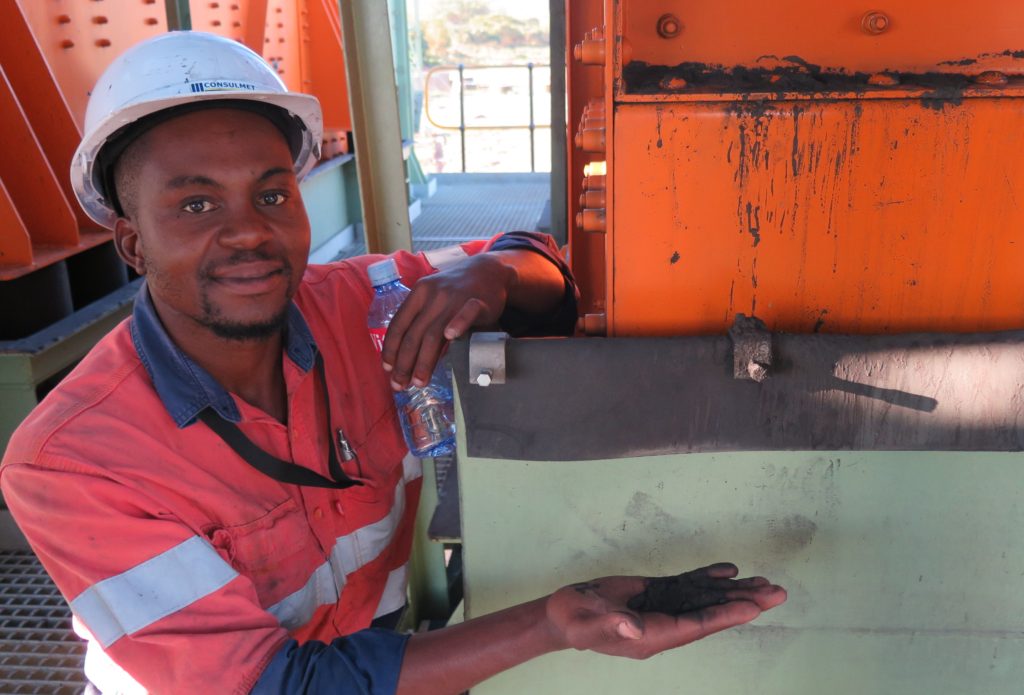
Ferrosilicon is the vital ingredient in this density separation exercise. Nhlapo shows us remnants of the powdery, ash-grey ferrosilicon that is mixed with water at the DMS to help separate ore of different densities.
High capacity production requires high capacity trucks
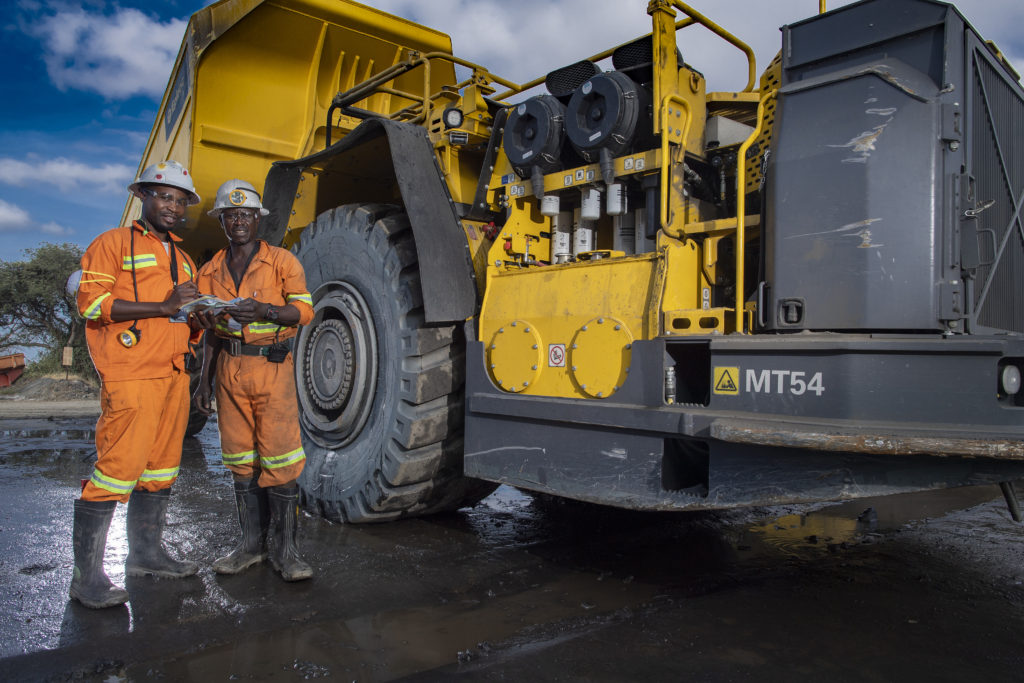
Beyond the DMS, en route to the mill, the mine’s new fleet of underground trucks are being put to work. Munali is the first mine in Africa to use Minetruck MT54 high-capacity underground trucks, which transport ore to the surface from the underground mine — up to 54 tonnes of ore at a time. These trucks are designed for fast, productive haulage in substantial mining operations like Munali’s, where navigation through narrower tunnels is required. If Munali is going to reach its target of 5,000 tpa of saleable nickel in concentrate, it’s going to involve lots of heavy lifting!
A side of copper with your nickel?
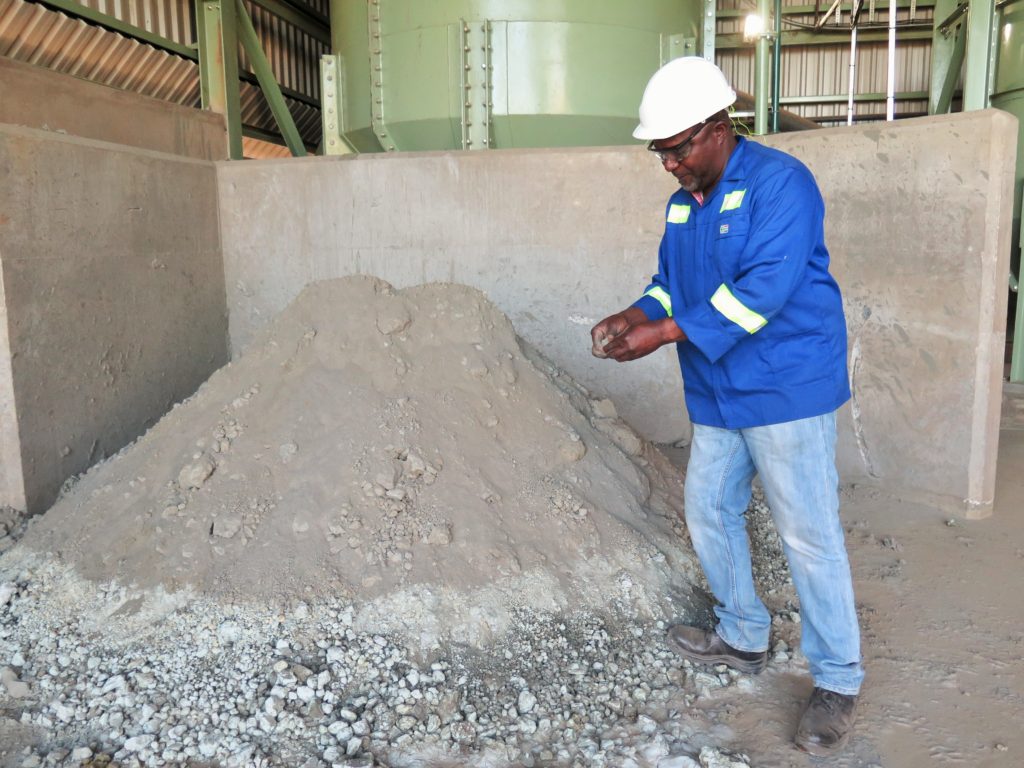
One of the major advantages of introducing a DMS to the plant is the increased ease with which minerals other than nickel can be identified within the ore that’s mined, explains Munali’s Head of Metallurgy, Joe Mtonga, standing beside a pile of Platinum Group Metals (PGMs) concentrate on site. The company is aiming high, targeting by-product credits of 200 tpa of copper, along with 200 tpa of cobalt, and 6,400 ounces per annum of PGMs.
Bagged and ready to go
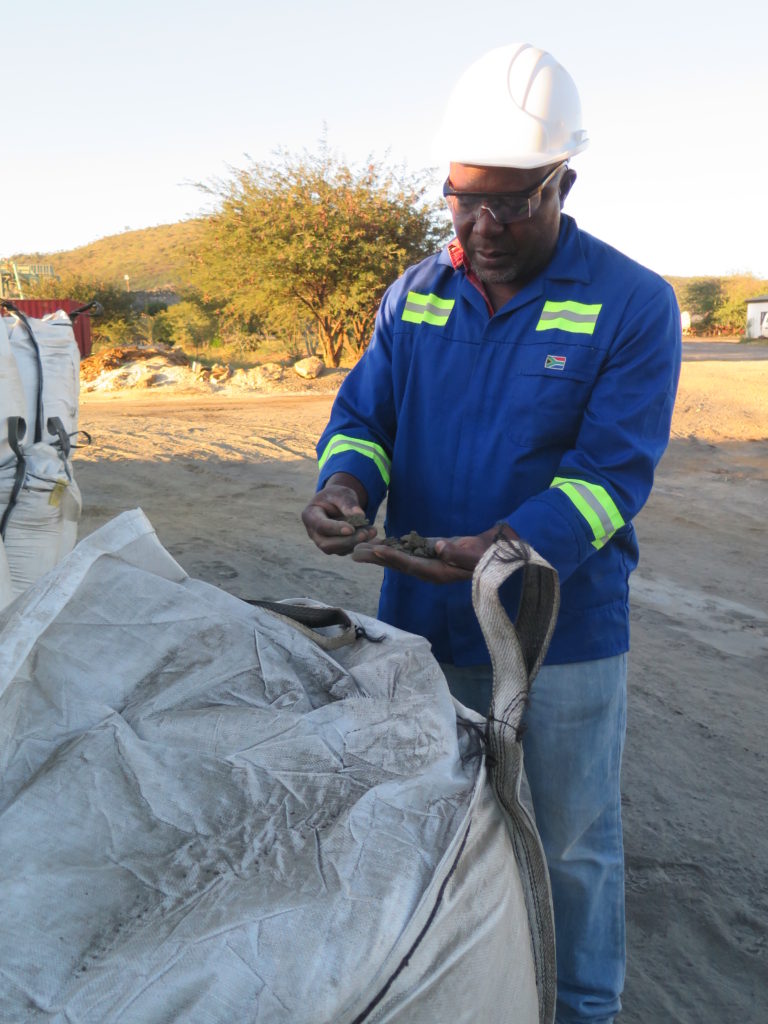
Mtonga inspects a handful of nickel concentrate in bags weighing 1-1.5 tonnes. One tonne of nickel fetches approximately US$13,000, depending on the current market.
A new dawn for nickel
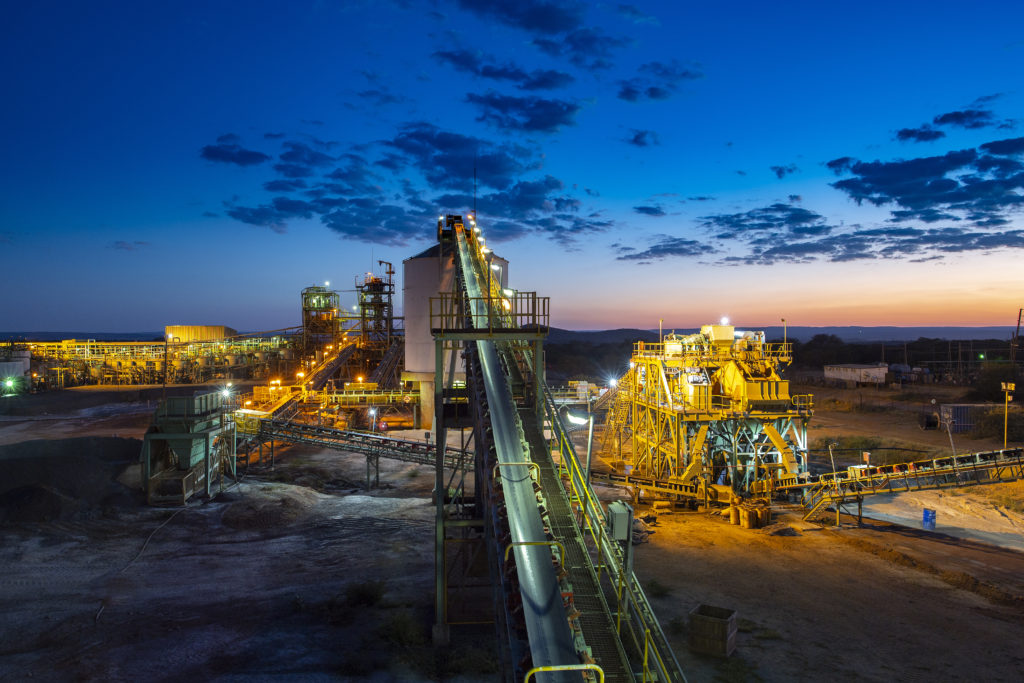
You don’t have to be a metallurgist to know that nickel is a mineral of the future. It’s become a vital ingredient in electric vehicle batteries, solar panels, and several other next-generation technologies, all of which are on the rise. As Banda put it: “Electric vehicles are here to stay, and changes in battery technology makes it even more exciting to venture into nickel production.”
Munali is way ahead of the curve in terms of the innovativeness of its operations, and it looks set to continue leading the way. “Many of the people who have visited us of late have said we’re in line with international standards,” says Banda modestly. “But there is still room for improvement.”
See also: Meet the metallurgist who never stopped believing in Munali Nickel Mine






















